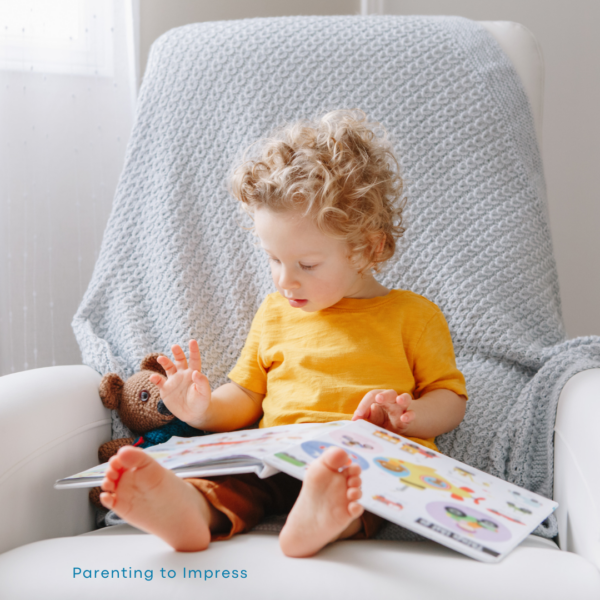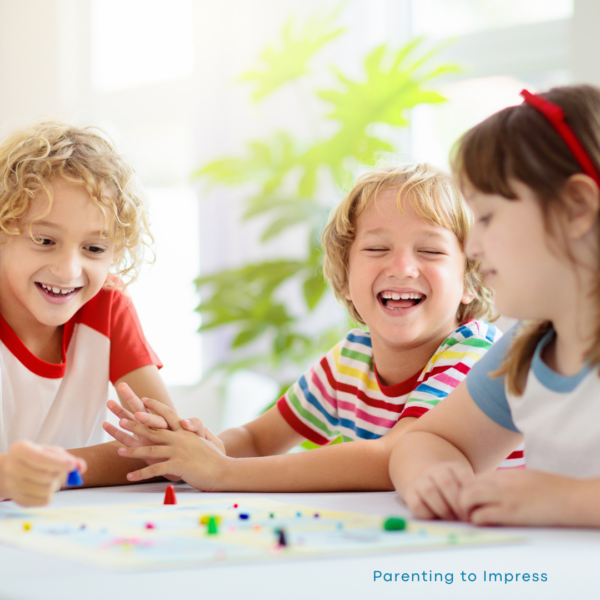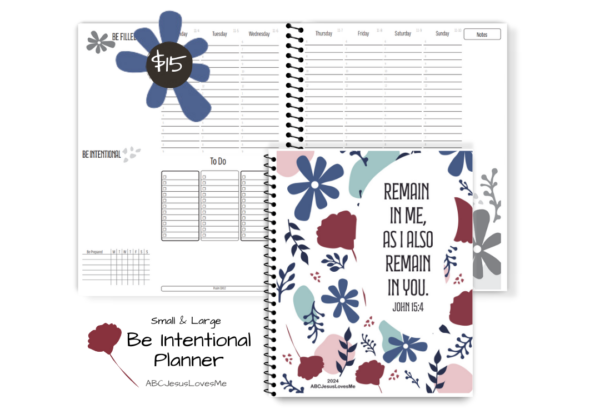Resharing from 2013 an update to one of the most popular posts on Parenting to Impress.
Last week I shared a simple plan to teach your child to play independently. But in writing the post, I realized that there is an additional aspect to fostering independent play: what I call “stick-to-itiveness.”
Stick-to-iveness is a real word. Like…in the dictionary, in fact. It means “determination and persistence, especially in spite of difficulties; perseverance.” Now, that’s a character trait I want my children to develop!
Yet, I often hear adults lament, “She won’t stay focused on one activity for more than a couple of minutes.” I witness it when children visit our home, start playing a game, and then lose interest just five minutes in. Or at the park, where a child wants to swing, then decides on the slide, only to switch again to the monkey bars. A child who flits from one activity to another often leaves a trail of toys behind and an exhausted adult in their wake. Trying to keep a discontented child entertained can be brutal.
Now, picture that same child twenty years down the road. How will they respond when faced with tough or unwanted situations? Will they abandon ship or prepare to weather the storm? Perseverance training starts in preschool, shaping individuals to stick to the task at hand and overcome challenges.

How to Train Stick-to-itiveness
If your child is a kangaroo through activities, I suggest the same plan I shared last week to increase the child’s independent play.
- Let your child choose a toy, book, game, or activity they want to engage with for five minutes. Explain to them that they can’t switch to another activity until the timer goes off. Start the timer and let the child begin. When the timer chimes, they can choose to either keep playing with the same toy for another five minutes or switch to a different one.
- Gradually extend the duration of each activity as the child becomes more accustomed to staying with an activity.
When Can I Begin Teaching My Child Stick-to-itiveness?
Once a child becomes mobile, their natural inclination is to keep moving. While this is typical for their age, it’s also the moment to start instilling stick-to-itiveness. As a guideline, encourage the child to finish activities until they reach their natural conclusion or designated endpoint. For instance, conclude reading time at the end of a book or end game time when the game is over. Let me illustrate with two examples.

Teaching Focus When Reading a Book
While it’s common for young children to flip pages while reading, focusing on the text and illustrations is also crucial for learning. Either hold the pages closed to finish the page and eventually the book or redirect the child back to a specific illustration to engage with the book’s content to further interest.
If a child wants to leave your lap after a short reading time, gently readjust them in your lap and draw their attention to a portion of the illustration. While reading, consider the following:
- Has the child sat too long?
- Is the child hungry, tired, or thirsty?
- Is the book age-appropriate?
- Is this typical behavior for the child and thus training needs to occur to help build the child’s focus?
When my own children were young, I always aimed to finish the book before allowing them to leave. Sometimes, this meant quickly flipping past multiple pages to reach the end to ensure success. Then I evaluated the situation to determine if this was becoming a habit or situational.

Teaching Focus When Playing a Game
If you notice a pattern where the child struggles to finish games, opt for short ones like Uno or Go Fish. Some games, like Chutes and Ladders or Sorry, can drag on, especially if players keep moving backward. If a game is taking too long, set a timer and declare a winner after a few minutes.
Another tip: Sometimes, children switch between activities because they haven’t learned how to play independently. In such cases, demonstrate how to play or brainstorm ideas together. For instance, if the child is drawing, brainstorm different things they can draw, or if they’re playing with trains, come up with ideas for building tracks. Generating ideas can be crucial before extending playtime to maintain the child’s interest. For more ideas, check out last week’s blog post on independent play.
But Stick-to-itiveness is More Than Play Development
As I’ve emphasized, stick-to-itiveness and independent play are crucial for development. However, because we aim to “impress” God in our parenting and teaching, these two areas of focus go way beyond play. My objective as a parent is to shape a child who remains steadfast in their faith through life’s challenges and successes. I desire them to be equipped with stick-to-itiveness to serve God for His glory. This foundational training begins during their preschool years. Let’s embrace this calling with intentionality and love, knowing that the seeds we sow today will bear fruit for generations to come.

Now is the time to order your Be Intentional Planner! Available in the large size, use this spiral-bound book to intentionally guide you from July 2024 – June 2025. Only $15 to help you “remain in me, as I also remain in you” (John 15:4). Order now!
